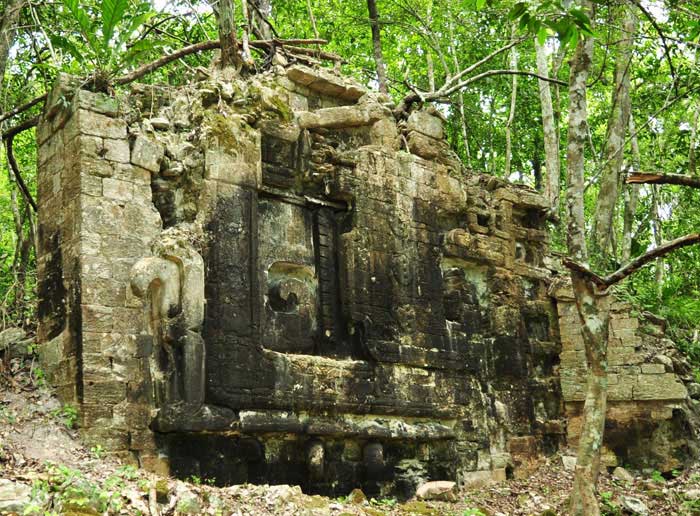
Two ancient Maya cities featuring ball courts, pyramid, plazas, and, in one case, a spectacular entrance shaped like the open jaws of a monster, have been discovered in Mexico’s Yucatán peninsula. An expedition lead by Ivan Sprajc of the Research Center of the Slovenian Academy of Sciences and Arts uncovered both cities in the Calakmul Biosphere Reserve, which was one of 29 culturally significant areas to receive United Nations Educational, Scientific and Cultural Organization (UNESCO) World Heritage Site designation in June.
“Aerial photographs helped us in locating the sites,” Sprajc told Discovery News. “In the jungle you can be as little as 600 feet from a large site and not even suspect it might be there; small mounds are all over the place, but they give you no idea about where an urban center might be.”
One of the cities, called Lagunita, had probably already been found by modern archaeologists including the American Eric Von Euw back in the 1970s. Because he failed to record its exact location, archaeologists had been unable to return to the site in the decades since. A comparison between the city’s monuments and drawings of the lost Von Euw discovery revealed similar reliefs and hieroglyphics.
The other site has been named Tamchen, which means “deep well” in Maya after its many underground cisterns, or chultuns used to capture rainwater.
The cities are not the only major discovery of Maya archaeological sites that have been made recently. Workers digging the foundations for a basketball court in Meirda, Mexico, unearthed a layer of pink stone in March that was quickly identified as a ball court for the ancient Maya ballgame.